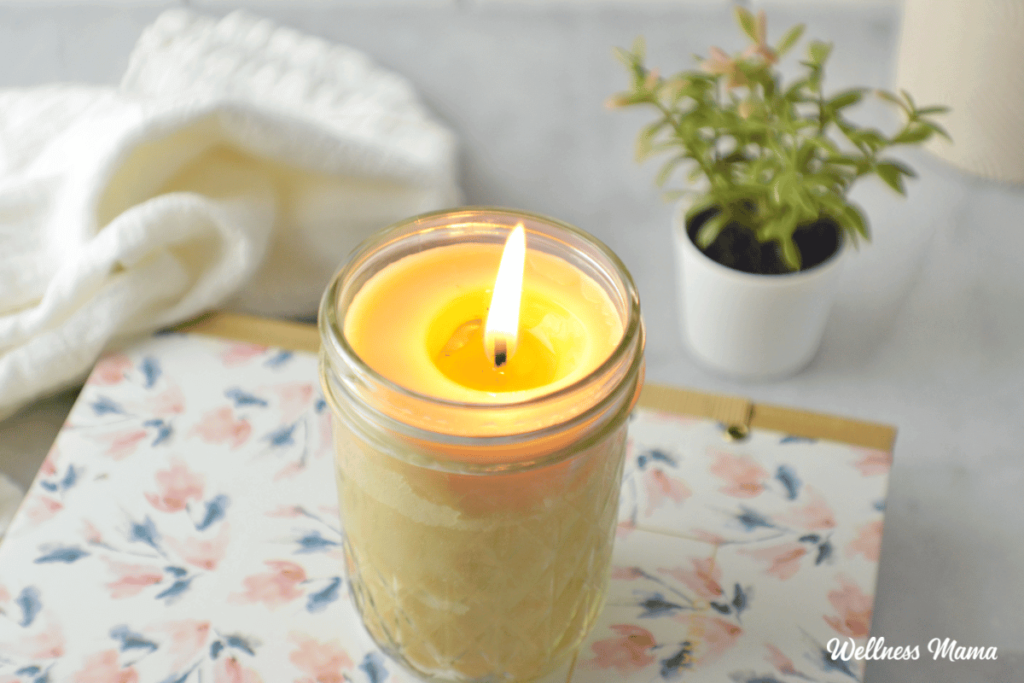Candle making is a popular hobby among craft enthusiasts. The process of creating your own candles allows for personalization and customization, making it an enjoyable and creative endeavor. One of the most important decisions you will make when embarking on a candle making project is choosing the right candle wax. With so many options available, it can be overwhelming to know which wax is best suited for your needs. In this article, we will explore different types of candle wax, factors to consider when choosing wax, and provide a guide on how to melt and mold different waxes. We will also discuss common candle making problems and troubleshooting techniques. So let’s dive in and discover the possibilities of candle making!
Understanding Different Types of Candle Wax
Candle wax comes in various forms, each with its own unique characteristics. Understanding the advantages and disadvantages of different types of candle wax will help you make an informed decision when choosing the perfect wax for your candles.
When it comes to candle making, one of the most commonly used waxes is paraffin wax. Derived from petroleum, paraffin wax has a low melting point, making it easy to melt and pour. This wax produces a bright, steady flame that creates a warm and inviting ambiance. Additionally, paraffin wax has good scent throw, meaning it releases fragrance effectively. However, it is important to note that paraffin wax is non-renewable and may release harmful chemicals, such as benzene, toluene, and formaldehyde, when burned.
If you prefer a more natural alternative, soy wax is an excellent choice. Made from soybean oil, soy wax is biodegradable and eco-friendly. Similar to paraffin wax, soy wax has a lower melting point, making it easy to work with. It also burns cleanly, producing minimal soot and a longer-lasting candle. However, one potential drawback of soy wax is that it may have a weaker scent throw compared to paraffin wax. This means that the fragrance of your candle may not be as strong or noticeable.
Another natural option is beeswax, a wax produced by bees. Beeswax has a warm, honey-like scent that adds a natural and inviting aroma to your candles. It burns cleanly with a bright flame and has an excellent scent throw, allowing the fragrance to fill the room. However, beeswax is more expensive than other types of wax due to the labor-intensive process of harvesting it. Additionally, beeswax may require additional additives to optimize fragrance release, which can add complexity to the candle-making process.
For those looking for a unique and visually appealing wax, palm wax is worth considering. Derived from palm oil, palm wax has an attractive crystal-like appearance that adds a touch of elegance to your candles. It also has good scent throw and burns cleanly, creating a beautiful and aromatic experience. Furthermore, palm wax is environmentally friendly as it comes from a renewable source. However, it is important to note that the sustainability of palm oil production has raised concerns for some individuals, as deforestation and habitat destruction can be associated with its cultivation.
By understanding the pros and cons of different types of candle wax, you can make an informed decision that aligns with your values and preferences. Whether you prioritize sustainability, strong fragrance, or visual appeal, there is a wax out there that will help you create the perfect candle for any occasion.

Factors to Consider When Choosing Candle Wax
Now that we have discussed the different types of candle wax, let’s delve into the factors you should consider when selecting the right wax for your DIY projects.
Choosing the perfect candle wax involves more than just selecting a type; it’s about understanding the intricate details that can make your candle truly exceptional. Let’s explore a couple more factors that can elevate your candle-making experience.
The Purpose of Your Candle
First and foremost, consider the purpose of your candle. Are you making decorative candles or functional candles? Decorative candles may prioritize appearance and scent, while functional candles may prioritize burn time and wax stability.
Delving deeper into the purpose of your candle can lead to a more tailored choice of wax. For example, if you’re crafting candles for aromatherapy, essential oils can be seamlessly blended with soy wax for a cleaner burn and enhanced fragrance throw.
Your Budget
Another important factor to consider is your budget. Different types of wax come at varying price points. Paraffin wax is generally the most affordable option, while beeswax tends to be more expensive. Consider your budget and choose a wax that aligns with your financial constraints.
While budget is crucial, it’s also essential to think about the long-term benefits of investing in higher quality wax. Beeswax, though pricier, burns longer and cleaner than many other waxes, making it a cost-effective choice in the long run.
Environmental Impact
If sustainability is a priority for you, opt for natural waxes such as soy wax or beeswax. These waxes are renewable and biodegradable, making them eco-friendly choices. Palm wax, while derived from a renewable source, has raised concerns regarding deforestation and habitat destruction, so be sure to research the palm oil used in the wax you select.
Considering the environmental impact of your candle wax choice extends beyond just the wax itself. Packaging, transportation, and even the origin of the wax all play a role in the overall sustainability of your candle-making process. By choosing locally sourced waxes and recyclable packaging, you can further reduce your carbon footprint and contribute to a greener planet. Read more about Packaging at https://www.vt.edu/academics/majors/packaging-systems-and-design.html
How to Melt and Mold Different Waxes
Once you have chosen the right wax for your project, it’s time to learn how to melt and mold it. Safety precautions, tools, and step-by-step instructions are essential to ensure a successful candle making experience.
Safety Precautions When Melting Wax
When working with hot wax, safety should be a top priority. Always melt wax in a double boiler or a dedicated melting pot. Avoid direct heat, as it can be a fire hazard. Use a thermometer to monitor the temperature and never leave melting wax unattended.
It’s also important to protect yourself by wearing appropriate clothing, such as long sleeves and gloves, to prevent any accidental burns. Additionally, make sure you have a fire extinguisher nearby, just in case of emergencies. By taking these safety precautions, you can enjoy the candle making process without any worries.
Tools Needed for Melting and Molding
To melt and mold wax, you will need various tools. These include a double boiler or melting pot, a thermometer, a stirring utensil, and molds or containers to pour the melted wax into. Ensure that your tools are clean and in good condition, as any contaminants can affect the quality of your candles.
When it comes to choosing molds, the options are endless. You can use traditional candle molds made of metal or silicone, or get creative with everyday objects like mason jars, teacups, or even seashells. Just make sure that the molds are heat-resistant and can withstand the pouring of hot wax.
Step-by-Step Guide to Melting and Molding
1. Prepare your workspace by covering it with newspaper or a large plastic sheet to catch any spills or drips.
2. Set up your double boiler or melting pot and fill it with the appropriate amount of wax chunks or flakes. The amount of wax you need will depend on the size and number of candles you want to make.
3. Heat the water in the double boiler or melting pot to the recommended temperature for your chosen wax. Different waxes have different melting points, so it’s important to follow the manufacturer’s instructions.
4. Place the thermometer in the wax and monitor the temperature closely. Keeping the wax at the correct temperature is crucial for achieving the best results.
5. Stir the wax gently and consistently to ensure even melting. This will help prevent any clumps or air bubbles from forming in the final product.
6. Once the wax has reached the desired temperature, remove it from the heat source. Be careful not to spill any hot wax during this step.
7. Carefully pour the melted wax into your chosen molds or containers. Take your time and pour slowly to avoid any spills or splashes.
8. Allow the candles to cool and solidify completely before moving or trimming the wicks. This process can take several hours, so be patient. Once the candles are fully solidified, you can trim the wicks to the desired length.
Remember, candle making is both an art and a science. Don’t be afraid to experiment with different waxes, colors, and fragrances to create unique and personalized candles. With practice and attention to detail, you’ll soon become a master at melting and molding different waxes. Click here to read more about melting.
Troubleshooting Common Candle Making Problems
Even with careful preparation, candle making problems can arise. Cracking, sweating, sinkholes, and wet spots are just a few examples of issues you may encounter. It’s important to be aware of common problems and know how to troubleshoot them.
Cracking and Sweating
Cracking and sweating can occur when the rate of cooling is too rapid or the wax is overheated. To prevent cracking and sweating, ensure that you are pouring the wax at the correct temperature and allow the candles to cool gradually in a draft-free area.
Sinkholes and Wet Spots
Sinkholes and wet spots refer to indentations or air pockets that form within the candle. These issues can arise due to temperature fluctuations or improper pouring techniques. To avoid sinkholes and wet spots, ensure that the candle wax is evenly and gradually poured into the molds, avoiding sudden temperature changes.

Candle Burn Problems
In some cases, candles may burn unevenly or exhibit poor scent throw. These issues can be caused by factors such as improper wick size, poor candle design, or low-quality fragrance oils. Experimentation and careful observation are key in resolving candle burn problems. Adjusting wick size, improving candle design, or using higher-quality fragrance oils can help achieve optimal burning and scent performance.
But what if you encounter another common candle making problem? Let’s talk about tunneling. Tunneling occurs when the candle burns straight down the center, leaving a thick wall of unmelted wax around the edges. This can be frustrating, especially if you’ve put time and effort into creating a beautiful candle. To prevent tunneling, it’s important to trim the wick to the recommended length before each burn. A long wick can cause the flame to burn too hot, resulting in uneven melting and tunneling. Additionally, make sure to burn your candle for a sufficient amount of time during each use. This allows the entire top layer of wax to melt and prevents tunneling.
Another problem you might encounter is frosting. Frosting refers to the white, powdery appearance that can develop on the surface of soy candles. While it doesn’t affect the performance of the candle, it can be unsightly. Frosting is a natural characteristic of soy wax and is caused by the crystallization of the wax. To minimize frosting, try using a lower percentage of fragrance oil in your soy wax blend. You can also try pouring the wax at a slightly higher temperature to reduce the chances of frosting.
In conclusion, choosing the right candle wax is a crucial step in achieving your desired candle making results. Consider the unique properties and pros and cons of each type of wax. Take into account factors such as the purpose of your candle, your budget, and the environmental impact. Follow proper safety precautions and use the necessary tools when melting and molding your chosen wax. Pay attention to common candle making problems and troubleshoot them effectively. With the right knowledge and techniques, you can create beautiful and fragrant candles for your DIY projects. Happy candle making!
Read about c3 soy wax at: Benefits of Using C3 Soy Wax in Candle Making


